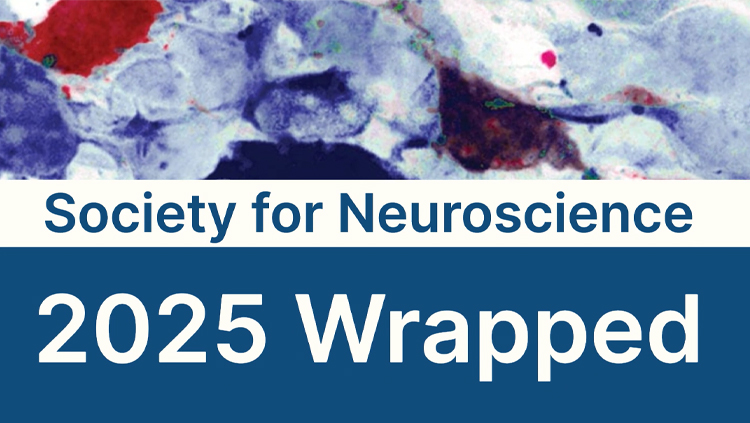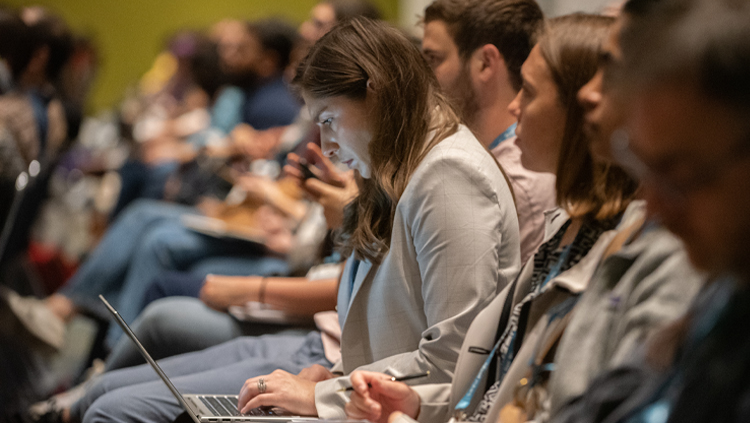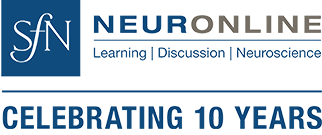
The Mazer Lab is a member of the NSF Established Program to Stimulate Competitive Research (EPSCoR)-funded Attention Consortium, a team of researchers at four universities collaborating to develop a model for the neural basis of attention.
In this interview, James Mazer, an associate professor at Montana State University studying visual perception and cognition, explains how collaborations can be formative for your career and shares advice for acquiring skills that will help you contribute to any team.
How do your lab and Montana State University work with other programs in the EPSCoR-funded Attention Consortium?
Our EPSCoR grant is specifically intended to encourage and facilitate collaboration between labs and universities. The grant brings together people from different labs at different institutions, using different tools and approaches, who share the common goal of understanding the neural bases of attentional modulation. Members of the consortium are using a variety of physiological and psychophysical techniques, ranging from optical imaging in rodents to human ECoG and deep brain stimulation, to elaborate the neural circuits responsible for attention.
At schools like Montana State, which is relatively small, scientific interactions can be difficult to come by — departments are smaller, there aren’t as many neuroscience faculty on campus compared to larger schools, and the neuroscience grad student population is smaller. Programs like EPSCoR can play a critical role in giving students additional opportunities for training and collaboration that might be otherwise hard to find or organize. In our case, the EPSCoR gives our students extensive opportunities to interact and collaborate with students, postdocs, and PIs at other institutions.
Why is it important for students to collaborate with other trainees, PIs, labs, and institutions during graduate school?
Collaborating gives you exposure to ideas. After completing lab rotations and qualifying exams, student focus tends to narrow, but it's important that students, postdocs, and faculty continue to interact with people outside their “scientific niche” in order to maintain awareness about things going on in other fields and what new techniques are becoming available.
From a scientific perspective, collaboration is a critical part of the learning process. Unfortunately, without some kind of formalized collaboration or interaction, it often doesn't happen. It's too easy to get buried in the details of your own project.
Grad students often switch focus areas when they start their postdoc. To make an informed decision about what you're going to do for your postdoc and to transition effectively from postdoc to faculty, you need to know what's going on outside your specific area of research.
In my experience, when people switch fields, they often go into a field they don’t have direct experience in. This means they are dependent on the diversity of their experiences to show them options outside their field. It’s common for people studying primates, for example, to switch to mice, or to switch from studying visual to somatosensory cortex. Those decisions ideally are based on interactions and sometimes formal collaborations beyond your lab. And sometimes collaborations, like lab rotations, can help you learn about what you don't want to do, which can be equally important.
What advice do you have for building and maintaining productive collaborations as a student?
Finding collaborations as a student can be difficult because collaborations are often driven by PIs. Often collaborations grow out of PI-PI interactions, with students being given the option of participating in a collaborative project that fits into the scope of their thesis project. This is particularly true if the collaborative project depends on obtaining new funding.
Meetings, like the SfN annual meeting, can be a good place to kickstart collaborations, even for students. It’s not a bad idea to talk to your PI first, but go to posters, find something that sparks your curiosity, and talk to the PI or students presenting the poster. Poster sessions can be a great opportunity to suggest sharing data and ideas or to ask the presenter if they’ve considered using different methods to test their hypothesis, methods you have experience with.
Beyond collaboration, what are some other key skills students should develop in a graduate program to be successful later in their career?
I’ve found many neuroscience graduate students enter graduate school with either a strong background in biology or strong analytical and computational skills. These days, I think effective neuroscientists need both. Neuroscience is becoming more and more interdisciplinary. Math and engineering are becoming increasingly important in the design, execution, and interpretation of experiments and data. It’s important for students to do whatever they can to master or at least become conversant in both areas.
Communication skills are also incredibly important. Most people don't enjoy giving talks and presentations to start — it’s a skill that must be learned and practiced. Training programs should provide opportunities for students to present their work and ideas in front of their peers in a low-pressure environment to get started.
How do you recommend students take advantage of opportunities provided by their programs and engage with faculty to develop these skills?
First, if your program provides those opportunities, you should take them, even if they aren’t mandatory. If they offer a course on how to publish papers and write grants, or invite someone from a journal to speak about publishing, make sure you're there. If they have training on communication — and a lot of schools do — go. There's often a program coordinator who tries to make sure the students are aware of opportunities like that, but as a student, it’s on you to attend.
A strong, positive relationship with the members of your thesis committee is also important. It's often easiest to populate your committee with the people from your program whose work is closest to your own, but those people aren’t necessarily the ones who are going to give you the best advice. Someone a little outside your area might have valuable insights into applying different experimental methods or restructuring a manuscript to make it more broadly accessible. Look for people you’re comfortable talking with and who you think will be willing to take the time to give you solid feedback. Talk to students ahead of you in your program.
Can you give an example of how collaboration has benefited one of your students?
One of my most successful students matriculated with the intention of studying visual attention in human observers. After rotating in my nonhuman primate lab, she was attracted to some of the more quantitative aspects of our approach and was intrigued by the idea of using our methods with human observers. She convinced me and another professor, studying visual attention in humans, to be co-advisors for her thesis.
Her thesis project was incredibly collaborative. The collaborative experiments between labs she initiated were phenomenally successful and resulted in a series of published papers. This collaboration was instrumental in determining where she went for postdoctoral training, what type of research she pursued as a postdoc, and the type of research she is now doing in her own lab. It even changed the focus of the research going on in my own lab.
It took some initiative and work on her part, but it was well worth the effort. If you have an idea for collaboration, you shouldn't feel uncomfortable talking to your PI about it.
Speaker








